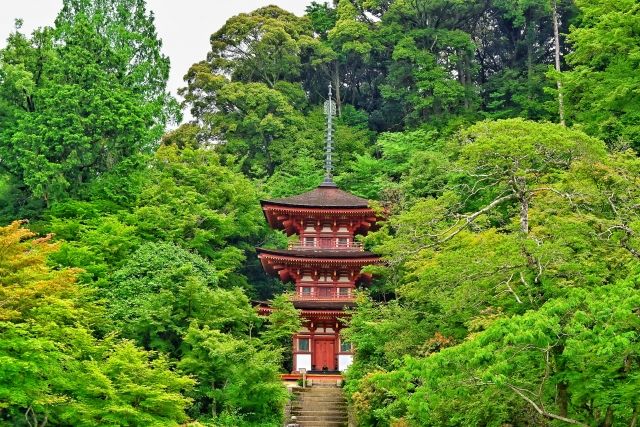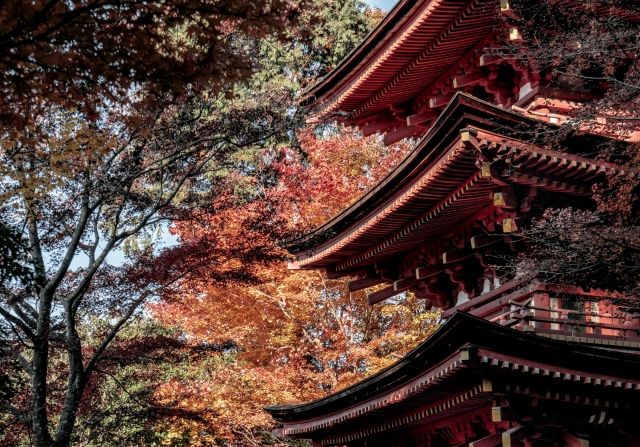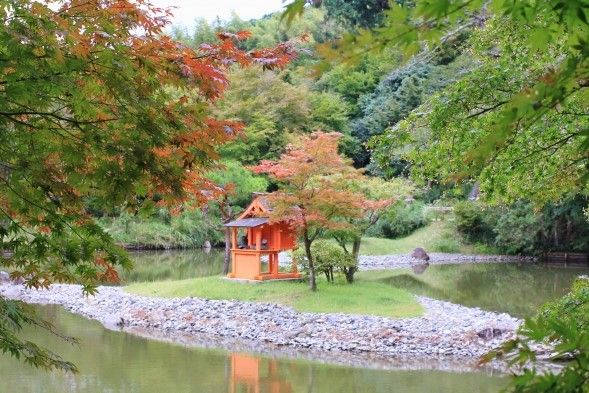A temple, home to the only surviving Heian-period Amida Hall, with nine Amida statues. It is also famous for its autumn foliage and three-story pagoda.
Joruri-ji Temple, located in the southern part of Kyoto Prefecture on the border with Nara Prefecture. The temple is named after Yakushi Ruriko-nyorai, the lord of the Eastern Joruri Pure Land. It is widely believed that Joruri-ji Temple was founded by Gyoki (668-749) in the Nara period (710-794). However, the origin of the temple is not completely known. It is also possible that the temple, like Gansen-ji, was built at the request of Emperor Shomu (701-756).
The temple has a vermilion three-story pagoda and an impressive main hall. The main hall is enshrined with nine statues of the Amida Nyorai, representing the nine levels of enlightenment. These statues were created in the Heian period (794-1185) and are designated as national treasures.


The garden at Joruri-ji Temple is one of the few gardens in Japan that represents the pure land of the Heian period. It is built around a pond representing the sea that separates life and death. The island in the center represents the earth and is connected to the land by a stone bridge. The Amida Hall on the west side of the pond represents the Western Paradise. On the east side of the pond is a three-story pagoda enshrining a statue of Yakushi Nyorai, representing the Paradise of the East. The main hall and the three-story pagoda were moved from Kyoto to Joruridera in the 12th century. Ancient stone lanterns also remain in places in the garden.


Joruri-ji Temple(浄瑠璃寺)
Address : Kyoto, Kizugawa, Kamocho Nishio, Futaba 40
Hours : 9:00 to 17:00
Admission : 400 yen
Access : From Kamo Station on the JR Kansai Honsen Line, take the Kizugawa City Community Bus Tono Line and get off at Joruri-ji-mae Bus Stop.